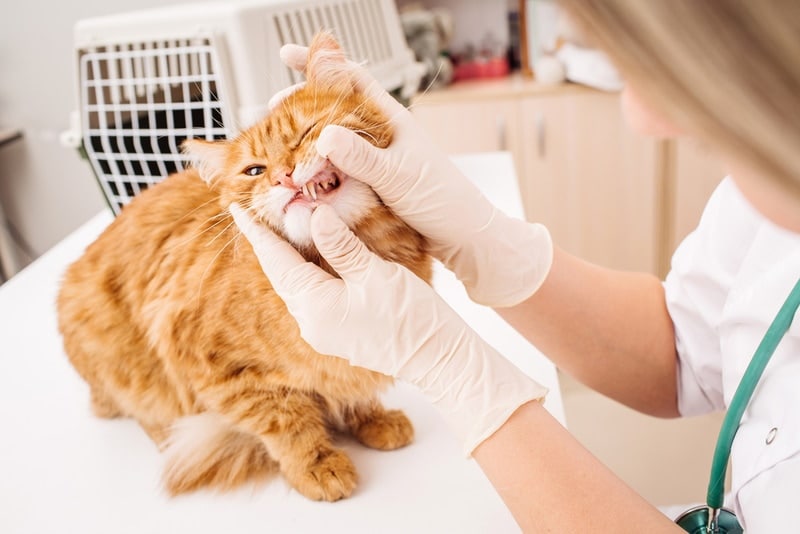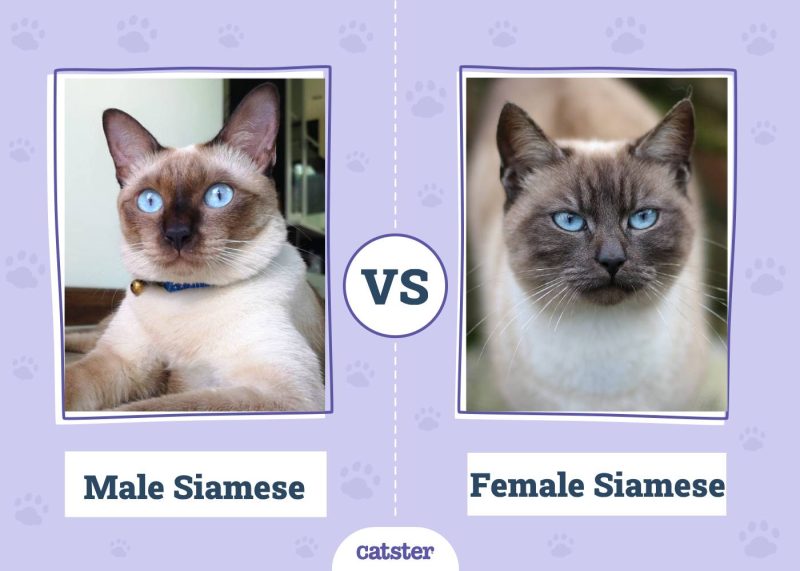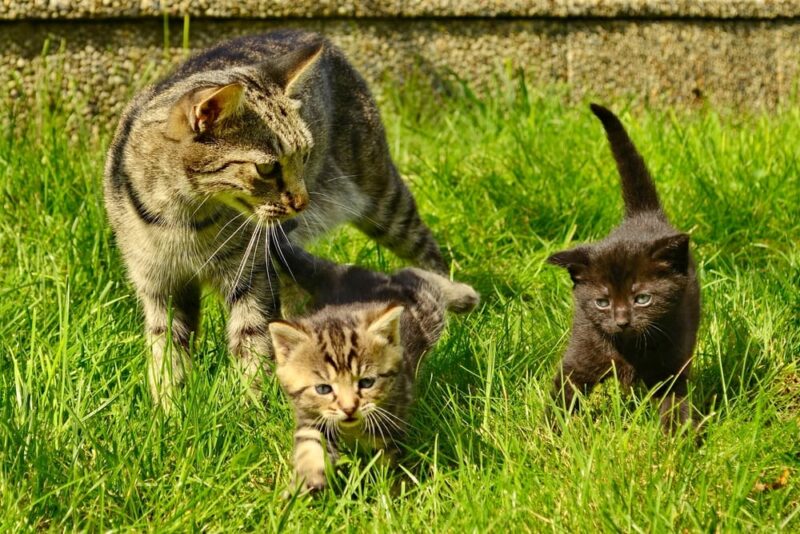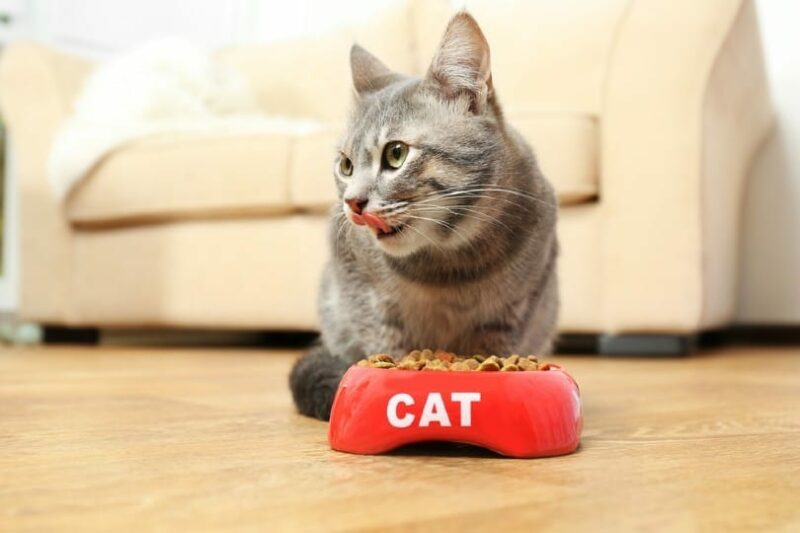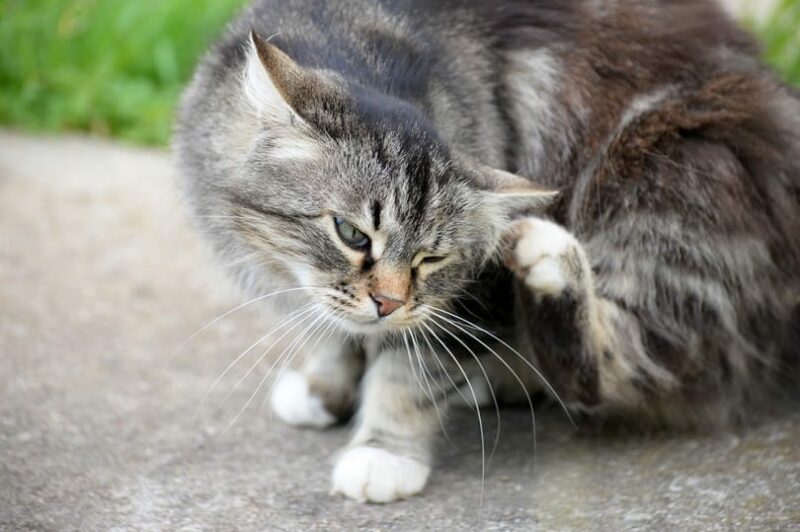In this article
View 6 More +The neurologic system is a complex network of nerves, signals, and responses. When something goes wrong or there is an injury within the neurologic system, physical abnormalities can be seen. Such is the case with Horner’s syndrome, a collection of signs that suggest nerve impairment or damage. Let’s learn more about Horner’s syndrome in cats below.
What Is Horner’s Syndrome?
Horner’s syndrome is a collection of physical signs that are caused by damage to nerves responsible for innervation of the eyes.
Now is a suitable time for a review of the neurological system. The nervous system is comprised of the central nervous system (brain and spinal cord) and the peripheral nervous system. The peripheral nerves are either autonomic or somatic. Processes that occur within the body that don’t require a conscious thought belong to the autonomic nervous system. Examples of autonomic activities are the beating of a heart, the initiation of a breath, and the change in pupil size. The sympathetic nervous system influences these body functions as it is responsible for the “fight or flight” mentality, as does the parasympathetic nervous system, which tries to keep the body in a state of calm.
In Horner’s syndrome, there is damage to the sympathetic nervous system innervating the eyes and face. When this occurs, the parasympathetic nervous system is left to innervate the associated structures, which leads to the constricted pupil noted in patients with Horner’s syndrome.
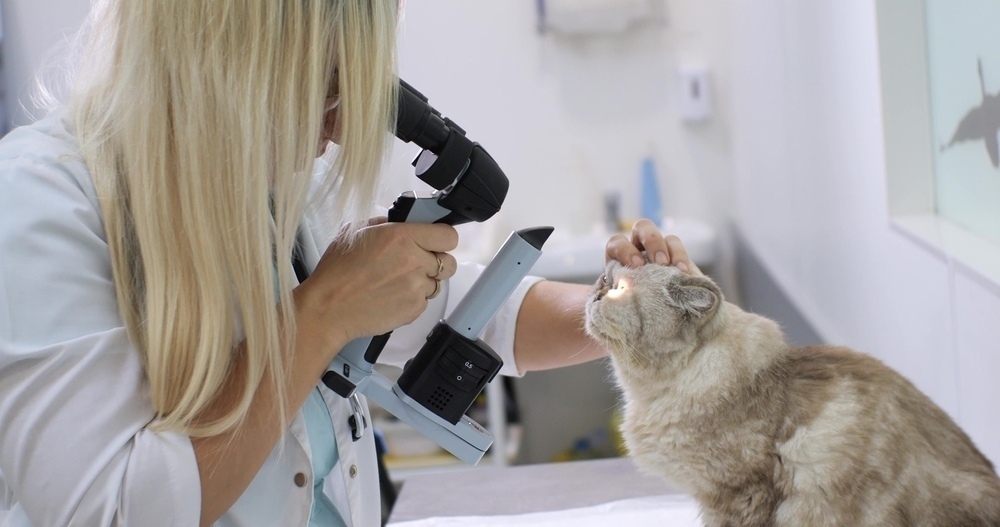
Causes of Horner’s Syndrome
Several different causes for Horner’s syndrome exist, but all are the result of trauma or damage to sympathetic nerves innervating the eye. Trauma can occur anywhere along the sympathetic path.
The pathway of the sympathetic nerves responsible for eye innervation travel can be divided into three different segments: the central segment (this comprises the brain and spinal cord), the preganglionic segment (the neuron exits the spinal cord within the chest and travels up the neck on both the left and right sides), and the postganglionic segment (the neuron starts below the ear and travels to the eye).
Injuries occurring within the central segment are referred to as first-order lesions. Injuries occurring to the pre- or post-ganglionic segments are called second and third-order lesions, respectively.
In cats, a leading cause of Horner’s syndrome is the result of trauma to the ear, neck, or face. Damage to nerves can be due to ear infections, growths, bites, blood clots, or infections found behind the eye. Additionally, tumors within the chest can also constrict or irritate nerves leading to Horner’s syndrome.
In dogs, Horner’s Syndrome is often classified as idiopathic, meaning an unknown cause has led to the condition. This is rarely the case in cats.
Signs of Horner’s Syndrome
Horner’s syndrome typically only affects one side of the body. Rarely, both eyes can be impacted.
- Constriction of the pupil on the affected side
- Drooping of the upper eyelid on the affected side
- Sunken appearance to affected eye
- Red, visible, prominent third eyelid in the affected eye
Is your cat presenting any of these signs? We suggest you speak with a vet online.
If you need to speak with a vet but can't get to one, head over to PangoVet. It's an online service where you can talk to a vet online and get the advice you need for your pet — all at an affordable price!

Diagnosing Horner’s Syndrome
The first step in identifying Horner’s syndrome is having an evaluation performed by your veterinarian. Often, when Horner’s is first identified, thoracic radiographs will be recommended if there is not an obvious reason for the clinical signs, such as an ear infection. Radiographs can help identify a thoracic mass. Your veterinarian will evaluate the eyes and ears. Additionally, a thorough neurologic exam will be performed. In certain cases, the primary care veterinarian may recommend a consultation with a neurologist.
Topical phenylephrine eye drops may be administered into the patient’s eyes to stimulate a response. This is a modality used to differentiate between second and third-order lesions. The eye drops cause dilation of the affected eye, and the concentration of the drop used and the time in which it takes for the response to occur helps to determine which type of lesion is present.
Treating Horner’s Syndrome
Horner’s syndrome typically can resolve on its own, given time. However, identifying and treating the underlying cause when possible is immensely helpful.
Caring for a Cat With Horner’s Syndrome
Care must be taken to address the underlying cause of Horner’s syndrome when possible. Adjustment to your household to accommodate a patient with Horner’s syndrome is not typically necessary unless additional signs like ataxia or dizziness are noted. Close observation of your pet’s behavior should be done so that further vet care can be sought out if necessary.
Frequently Asked Questions (FAQ)
My cat was recently diagnosed with Horner’s syndrome. Can I give eye drops to help improve the condition?
Eye drops can be administered to improve the physical appearance of an affected animal’s eye. It is important to note that this does not resolve the underlying cause.
Is Horner’s syndrome painful to cats?
The syndrome itself is not painful; however, the underlying cause of Horner’s syndrome may lead to discomfort.
My cat was recently treated for an ear infection. Could this have led to Horner’s syndrome?
Yes! Middle ear infections can lead to Horner’s syndrome in small animals.

Conclusion
Horner’s syndrome is a collection of clinical signs that occur secondary to damaged nerves. There are several different ways in which a patient can develop Horner’s syndrome, and diagnostics may be necessary to pinpoint the cause. Seeking veterinary care is recommended when abnormal signs are noted.
Featured Image Credit: sophiecat, Shutterstock







